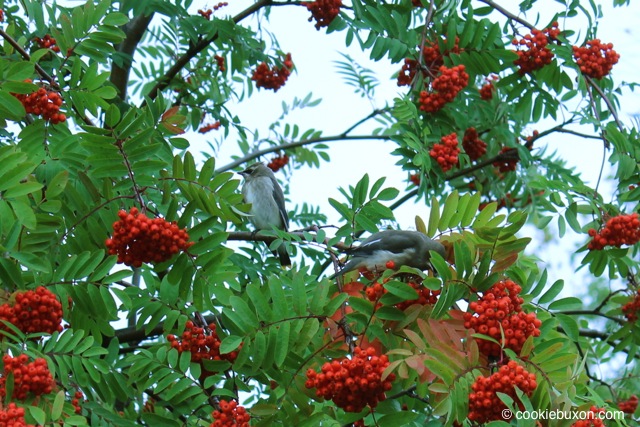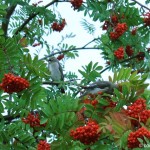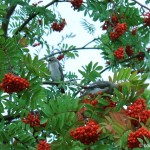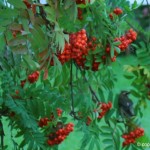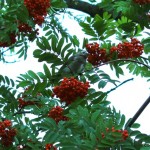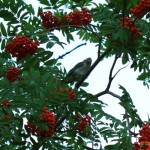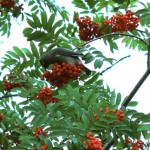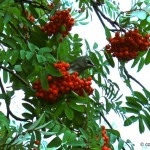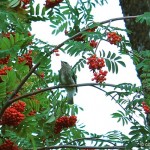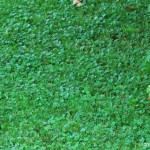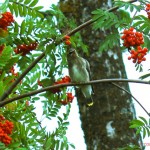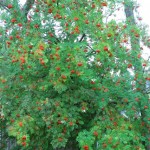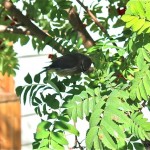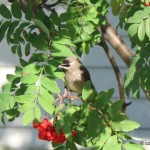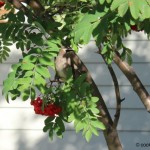Cedar Waxwings
Cedar Waxwings flock in large numbers in the fall, much like starlings do. Their movement as a flock drew my attention to well over a dozen juvenile Cedar Waxwings feasting on the berries of a mountain ash tree. The young birds were eating their fill of the tree’s red fruit in the town of Gimli, Manitoba, which is a lovely town situated along the western shore of Lake Winnipeg. Returning to Gimli a week after this first sighting, I again spotted a small flock of the juvenile cedar waxwings in another section of town. I could not locate any parent birds on either of these occasions.
Although not yet showing the gorgeous yellow belly, red wing tips, full head crest, and other distinctive features of the mature Cedar Waxwing, the juveniles show enough of their mature characteristics for easy identification. Give-away features are the bright yellow tail tip and the ragged beginnings of the head crest. These distinctions, combined with the black eye band, the white undertail, and the grey, beige, and white streaked belly common in the juvenile are enough to identify the species.
Cedar waxwings breed in the boreal and woodland areas of Canada, and near farmlands and orchards wherever fruit-producing trees and shrubs are abundant. They make their homes year-round in the more southerly regions of Canada and in the northern regions of the United States, pushing further south in the winter, if needed, in search of berries and fruit that sustain the flocks in winter. In summer, the birds typically dine on flies and other insects.
Though my school years are several decades behind me, I still recall the delight I felt in looking at a large picture of a Cedar Waxwing that I had clipped out of a magazine as an elementary school child and taped into my grade-five science notebook. What a gorgeous image it was, taken from one of the large format magazines of that period. I had a hard time throwing that little notebook away. I saw a mature adult Cedar Waxwing in the yard at my family home some years ago, as there was a mountain ash in that yard also, brimming with bright orange-red berries each fall. I hope to catch sight of the adult birds again soon, as it has been awhile since I’ve seen the Cedar Waxwing in my own local neighbourhood.
Resources for birders:
The Cornell Lab of Ornithology’s All About Birds website had helpful information on identifying both the Bohemian Waxwing and the Cedar Waxwing.
In terms of published field guides relating to northern birds, you might like to obtain these reliable guides.
We have both in our home collection:
The Roger Tory Peterson A Field Guide to the Birds
The Audubon Society Field Guide to North American Birds
Photos and Text: NK
Photo location: Gimli, MB (2014)
Copyright: NK/cookiebuxton.com
Photo Gallery
Click on any image to enlarge, and click again on the photograph to advance through the series.
